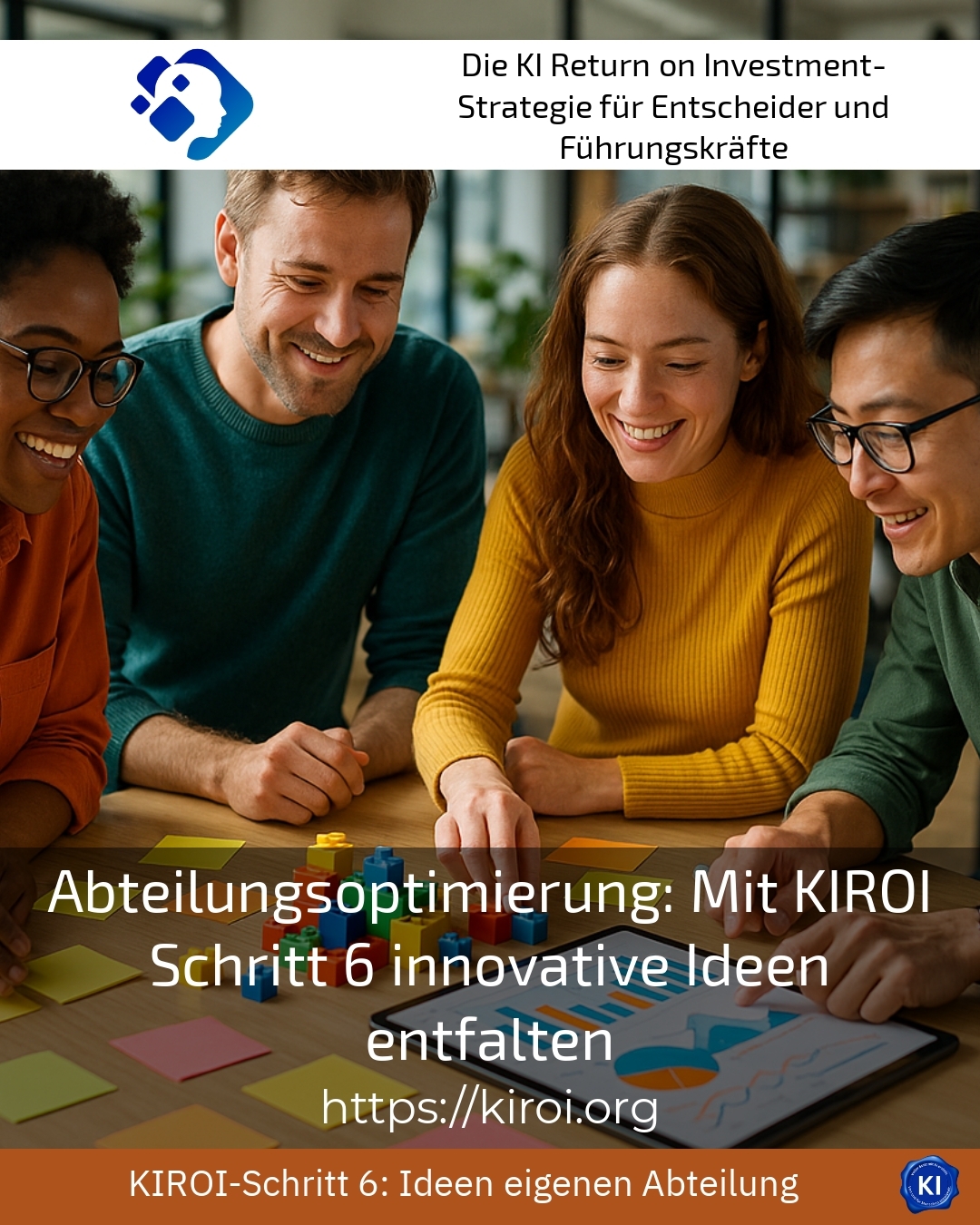Departmental optimisation is a key driver for sustainable corporate success. With the KIROI Step 6 method, innovative ideas can be developed in a targeted manner and put into practice. This not only increases efficiency, but also fosters the creativity and motivation of employees. This article will guide you through practical examples and give you ideas on how you can make your department fit for the future.
Department optimisation: targeted development of innovation
Departmental optimisation helps not only to streamline processes, but also to activate genuine innovative strength. This is exactly where step 6 of the KIROI strategy comes in: Through targeted support, teams are empowered to think creatively and at the same time design practicable solutions. The result is projects that work in everyday life and at the same time offer potential for sustainable improvements.
In the production department of a medium-sized company, for example, quality was significantly improved with AI-supported sensor technology. Employees independently developed monitoring concepts to recognise machine failures at an early stage. This led to a noticeable reduction in downtimes and reject rates.
Another example from sales shows how AI analyses were used to evaluate customer data in order to create personalised offers. As a result, the team was able to improve closing rates and gain valuable impetus for product development.
Departmental optimisation also promotes innovation in the HR department. The targeted use of digital tools helped to better select applicants and increase employee satisfaction at the same time. The entire department thus gained structure and agility.
Implement ideas successfully with KIROI Step 6
The sixth step in the KIROI process is particularly crucial because it bridges the gap between brainstorming and practical implementation. This is where impetus is provided to motivate employees to put new concepts into practice. Support is provided without excessive demands by developing prototypes in small workshops and adapting them iteratively.
In a customer service team, new communication guidelines made the processing of complaints faster and more effective. The quality of customer service increased measurably, which had a positive impact on the overall working atmosphere.
In purchasing, digitalised ordering processes have greatly reduced the number of incorrect orders. This led to considerable savings and strengthened collaboration between departments.
BEST PRACTICE with one customer (name hidden due to NDA contract) Thanks to KIROI Step 6, the company experienced a significant increase in internal team innovation. With the help of targeted workshops, employees developed new working methods that both shortened project times and improved internal communication.
Practical tips for optimising your department
To optimise the change process with KIROI Step 6, we recommend the following procedure:
- Enable an open collection of ideas in which all voices are heard.
- Use agile and short workshops to quickly test ideas as prototypes.
- Promote transparent communication about progress and results.
- Use supporting technologies, such as digital tools for idea management.
- Evaluate and adapt solutions iteratively to the needs of your department.
This structured support ensures that effective innovations emerge from creative impulses. At the same time, it increases employee acceptance and leads to a positive dynamic within the department.
Department optimisation as a sustainable driver of success
Companies that consistently optimise their departments strengthen their competitiveness. The KIROI method makes this process comprehensible and supports managers in actively involving their teams. This results in solutions that promote both efficiency and creativity. The results range from shortened processes and quality improvements to better utilisation of technical possibilities.
By combining a methodical approach, modern technology and coaching-based support, changes can be managed in a targeted manner. Companies benefit in the long term from innovative and motivated teams that are open to developments.
My analysis
Departmental optimisation is more than just an increase in efficiency. It promotes future-orientated cooperation and the development of innovation potential. KIROI Step 6 provides a practical framework for not only generating ideas, but also implementing them successfully. This turns departmental optimisation into an active process that strengthens teams and supports companies in the long term.
Further links from the text above:
Step 6 of the KIROI strategy: Practical examples for your own department
Department idea optimisation: With KIROI step 6 to success
Department optimisation: With KIROI step 6 to idea power
For more information and if you have any questions, please contact Contact us or read more blog posts on the topic Artificial intelligence here.















